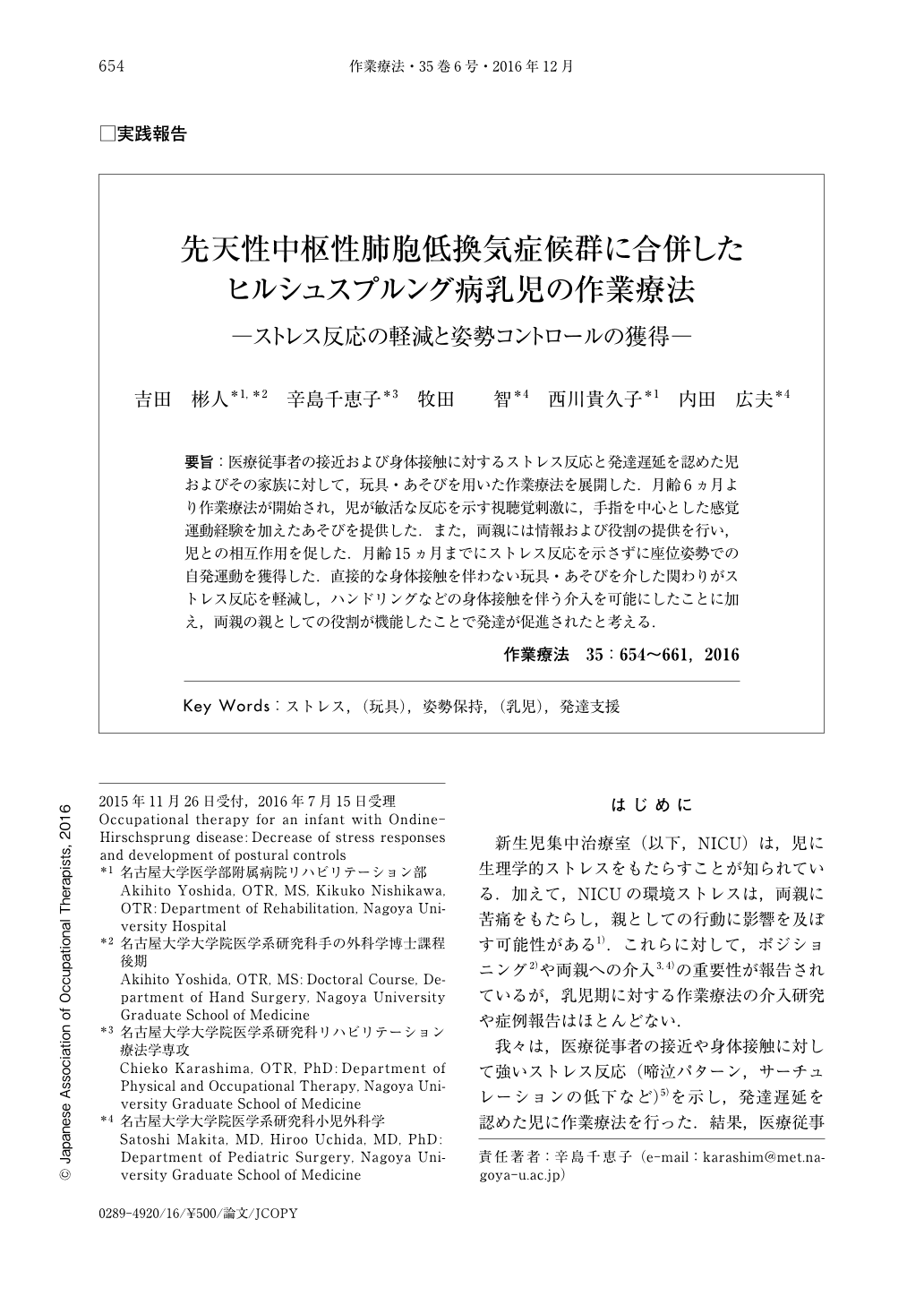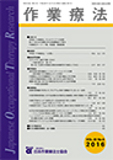Japanese
English
- 販売していません
- Abstract 文献概要
- 1ページ目 Look Inside
- 参考文献 Reference
要旨:医療従事者の接近および身体接触に対するストレス反応と発達遅延を認めた児およびその家族に対して,玩具・あそびを用いた作業療法を展開した.月齢6ヵ月より作業療法が開始され,児が敏活な反応を示す視聴覚刺激に,手指を中心とした感覚運動経験を加えたあそびを提供した.また,両親には情報および役割の提供を行い,児との相互作用を促した.月齢15ヵ月までにストレス反応を示さずに座位姿勢での自発運動を獲得した.直接的な身体接触を伴わない玩具・あそびを介した関わりがストレス反応を軽減し,ハンドリングなどの身体接触を伴う介入を可能にしたことに加え,両親の親としての役割が機能したことで発達が促進されたと考える.
We approached an infant with both severe stress responses to health care providers and developmental delay, and the family using toys and plays. Occupational therapy began at 6 months of age through family support and utilizing toys and a play program. The play program included audiovisual stimuli and sensory-motor experiences for his finger because he positively reacted to them. In addition, we provided information in order to facilitate parent-infant interaction and collaboration between parents and the occupational therapist. By 15 months of his age, the infant actively touched in a sitting position without stress responses to physical contacts. We considered that involvement with toys and play without physical contact permitted a physical contact approach such as handling because the intervention guaranteed the infant's safety. Moreover, parental intervention may have important implications in promoting infant development.

Copyright © 2016, Japanese Association of Occupational Therapists. All rights reserved.


